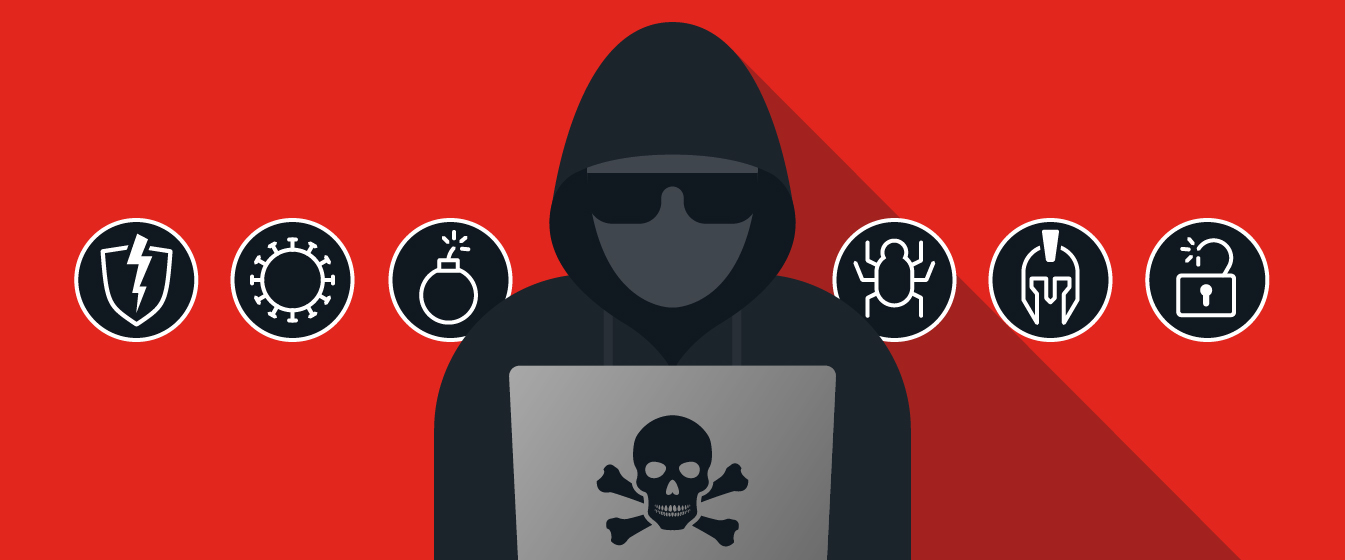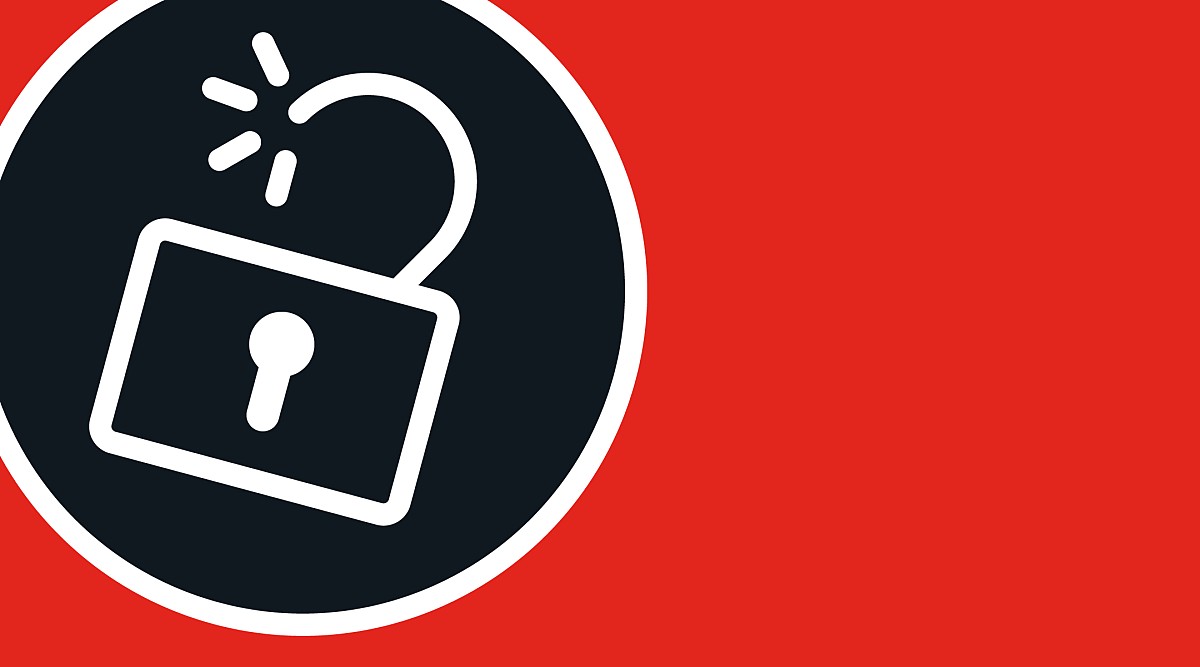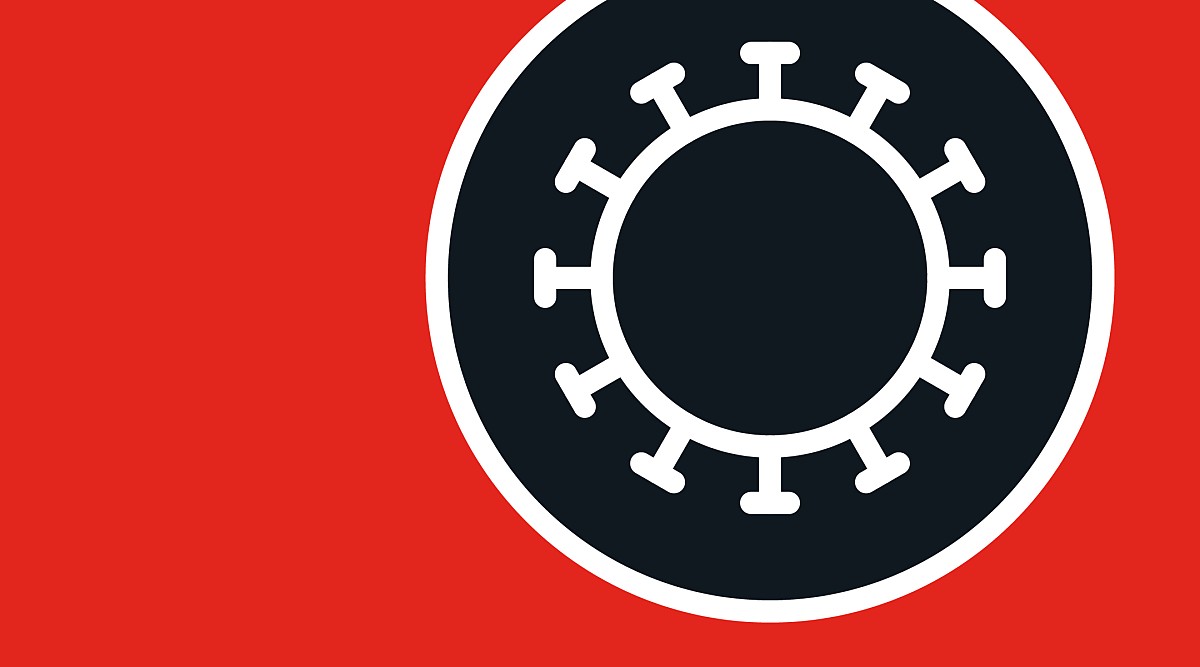Blog: Security
How to keep your next event from getting hacked
12 October 2025 minute read

It’s impossible to open a newspaper these days without learning that cyber criminals have forced the shutdown of yet another major company and are holding it to ransom.
From Jaguar Land Rover to M&S, Collins Aerospace to Salesforce, some of the world’s biggest enterprises have suffered data breaches in the past couple of months alone. It’s costing billions of dollars and it’s on the increase.
When I was a teenager, we were happy playing the guitar badly and pretending to like cider. These days it feels like the new pastime of choice for bored youth is hacking into your company’s servers and posting all your customers’ personal information on the dark web – whether for money, bragging rights (or just fun).
And that’s before we get to organised criminal gangs who’ve turned hacking into big business; or the various nation states who encourage them for political ends.
It’s all very worrying, especially if you’re in the events business.
Why? Because from registration and ticketing to mobile apps and analytics – event data is an attractive target for cybercriminals, and now it’s all online. Every form, every integration, every email invitation is a potential entry point for attackers.
For event planners and their IT teams, protecting this data is no longer optional. It’s an essential part of safeguarding your brand, your attendees, and your business reputation.
So, while we wait for our new Range Rover to be delivered (in magenta, of course) we thought we’d explore the key cyber security threats facing business events: how bad actors exploit vulnerabilities, and the advanced protections used by secure event management platforms to keep your event data safe.

Why event cyber security is suddenly a thing
In truth this problem’s been building gradually over the last 5–10 years. Modern events are now digital ecosystems. You collect personal information, process payments, send thousands of emails, and integrate with enterprise CRMs, marketing automation tools, and mobile event apps.
That’s a goldmine for hackers. A single breach could expose attendee data, disrupt registration, or damage years of brand trust. According to IBM’s Cost of a Data Breach Report, the average breach now costs over $4.5 million – and that’s before accounting for reputational damage.
It might be tempting to think that your events won’t attract the attention of cyber criminals.
But this would be a mistake. Hackers look for vulnerabilities. They know that events are inherently time-sensitive, with hard deadlines – making organisers more likely to pay ransoms or indeed to have overlooked small security flags.
They also know that companies and agencies tend to use multiple vendors and tools to run events (registration sites, payment gateways, CRM integrations, apps etc) and that every integration creates a new threat vector.
And, dare we say, it will not have escaped their attention that many of the event platforms out there are old, under-invested, and (frankly) about as secure as a McDonald’s delivery in the West Wing of the White House.
So here we go.
The top cyber threats facing business events
It’s worth knowing what you’re up against. Here’s how hackers commonly target event organisers and the platforms they use.
1 Phishing and Business Email Compromise (BEC)
Fake ‘event emails’ are one of the easiest ways for criminals to steal credentials. Attackers impersonate organisers, sponsors, or even the event platform itself, sending links that lead to counterfeit login or payment pages.
Without strong authentication controls, one click can compromise an entire attendee database.
2 Registration form exploits
Online registration forms are a critical vulnerability if not properly secured. Common exploits include:
SQL injection Inserting malicious code into registration form fields or inputs to access backend databases. If the system isn’t properly secured, these malicious inputs can trick the database into exposing or (worst-case scenario) destroying information. These attacks specifically target public-facing forms, which tend to be a key feature of event platforms.
Cross-site scripting (XSS) Injecting scripts that hijack user sessions. Cross-site scripting attacks involve injecting malicious scripts into pages viewed by public users. XSS attacks can compromise both user experience and data security, potentially allowing attackers to steal session cookies, redirect users to malicious sites, or capture sensitive information.
Bot registrations Automated submissions that overwhelm systems and harvest data. Event platforms face increasingly sophisticated automated threats in the form of advanced bots that mimic human behaviour to avoid detection. Some bots are designed to flood server resources without triggering standard protections, and gradually degrade performance, making them particularly difficult to defend against.
3 Account takeover and weak passwords
This is the low-hanging fruit for cyber criminals. Administrator accounts in particular often have broad access to event data. If credentials are stolen or reused from another breach, attackers can easily log in, download data, or send fraudulent messages.
4 Insecure integrations and APIs
Most modern event platforms connect to the enterprise CRMs, marketing systems, and payment gateways of their clients. This is vital for efficient workflows but if APIs aren’t properly authenticated and validated, they can become silent backdoors for data theft. Let people who don’t know what they’re doing configure these things and you’re flirting with disaster.
5 Insider or vendor risk
Not all threats originate outside the organisation. A careless vendor, temporary contractor, or internal user with too much access can inadvertently (or intentionally) expose sensitive data. Someone shares a test URL that isn’t tokenised or forgets to close something off. Hackers specialise in finding loose ends.
6 Distributed Denial-of-Service (DDoS)
A flood of malicious traffic during registration or ticket launch can take your entire event site offline – sometimes just hours before it opens.

How secure event platforms protect your data
A truly security-first event platform doesn’t just react to threats – it’s built to prevent them. Below are the core defences you should expect when evaluating an enterprise-grade SaaS event management platform.
1 End-to-end data encryption
All sensitive data – from registration forms to payment processing – should be encrypted:
In transit Using modern TLS 1.2 or 1.3 encryption.
At rest With AES-256 or equivalent encryption.
Field-level protection Tokenisation for payment data or personally identifiable information (PII).
This ensures that even if data is intercepted, it’s unreadable and unusable.
2 Multi-Factor Authentication (MFA)
MFA (sometimes known as 2FA) involves adding a second layer of authentication (such as a mobile app code or security key) that protects organiser accounts even if a password is stolen. It’s one of the simplest and most effective defences against account takeover attacks.
3 Role-Based Access Control (RBAC)
Not every user needs full platform access. Advanced event platforms let you assign granular permissions: for example, marketing can send emails, but only finance can view payment reports. This limits potential damage if a single user account is compromised. It also stops disgruntled employees or contractors from getting up to mischief with your data.
4 Regular penetration testing and security audits
Independent security experts should test the platform regularly, simulating real-world attacks to uncover vulnerabilities before criminals do. Audits of security systems, protocols and incident response plans should be undertaken at least once a year.
5 Secure APIs and integrations
The best SaaS event platforms will always authenticate all API calls with instantly revokable tokens, apply strict rate limits, and continuously monitor for abnormal activity. Integration points – with CRMs, ERPs, or payment gateways – should ideally be sandboxed to prevent data leakage.
6 Advanced email protection
Emails sent out by your platform on behalf of your events – whether marketing or transactional – should be authenticated through DMARC, DKIM, and SPF protocols to stop spoofing. Built-in link sanitisation and anti-phishing filters should ensure that your attendees never receive malicious or altered content.
7 DDoS protection
The best platforms use a layered approach with multiple strategies to defend against DDoS attacks, including:
Traffic scrubbing Malicious traffic is diverted to scrubbing centres, which filter it and forward only clean, legitimate traffic to the intended destination.
Content Delivery Networks (CDNs) A CDN’s globally distributed network of servers absorbs and distributes large volumes of traffic, which helps reduce the impact of a DDoS attack on the origin server.
Web Application Firewalls (WAFs) A WAF operates at the application layer to protect against attacks by analysing and filtering malicious requests before they reach the web server.
Rate limiting This technique restricts the number of requests a server will accept over a specific time, preventing a single source from overwhelming the system.
Bot management Specialised tools use AI and machine learning to distinguish between malicious bots and legitimate human visitors, helping to block botnet-driven attacks.
Critically, DDoS protections should be applied to all custom domains your event maps to – not only to the platform itself.
8 Continuous threat monitoring
Modern platforms use 24/7 traffic monitoring to detect anomalies and respond to incidents in real time. Automated alerts trigger if unusual data exports or login attempts occur.
9 Secure data deletion and retention
Compliance with privacy laws like GDPR and CCPA requires secure deletion and limited retention of event data. Mature platforms enforce automated retention schedules and provide auditable proof of deletion.
10 Disaster recovery and business continuity
The best platforms will have redundant backups, geographic failover, and regularly tested recovery plans that ensure your event stays online – even in the face of an attack or infrastructure failure.

What you can do as a user of event technology
Keeping your data safe is shared responsibility between you and your tech providers. Even the most secure platform benefits from good operational hygiene. Here’s how your team can help reduce your risk:
- Enable MFA for all users – especially administrators and any agencies or suppliers who access the system.
- Train staff to spot phishing emails or suspicious links.
- Use strong, unique passwords managed via a secure password manager.
- Review user access regularly – remove old or inactive accounts.
- Work with your vendor to ensure integrations are using secure APIs.
- Keep attendees informed – let them know how official communications will look so they can spot fakes.
By combining these practices with a platform that prioritises cybersecurity, you significantly lower your risk profile.
How AttendZen keeps our customers’ events secure
At AttendZen we take a security-by-design approach to every aspect of event management. This means our platform was architected with security embedded from the earliest stages, rather than added as an afterthought.
It’s an approach that involves integrating security throughout the entire development lifecycle to reduce vulnerabilities and improve overall resilience against cyber threats, treating security as a fundamental business requirement and not just a technical feature.
Our platform is built on the same enterprise-grade infrastructure trusted by global brands, with:
- End-to-end encryption for all attendee and payment data
- MFA and granular role-based access controls
- Regular penetration testing and continuous monitoring
- GDPR and CCPA ready privacy workflows
All this is time-consuming and expensive, but the (sad) reality is that it’s no longer enough for your platform to merely host your events. It must protect them.
In today’s volatile digital world, cyber security is the new cornerstone of attendee trust. Planners and IT teams who choose secure, compliance-ready platforms aren’t just safeguarding data – they’re safeguarding their reputation, their partners, and their customers.
So, before you plan your next event, ask your provider the hard questions about their security architecture, posture and data practices. The answers will tell you everything you need to know about whether your event – and your brand – are truly safe in their hands.



